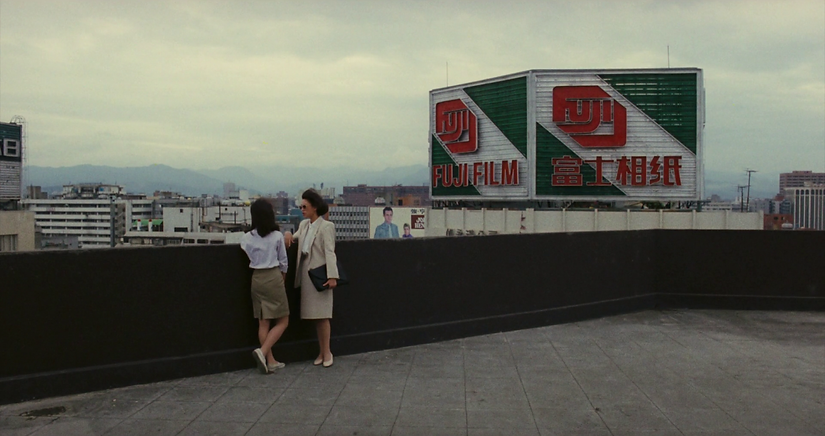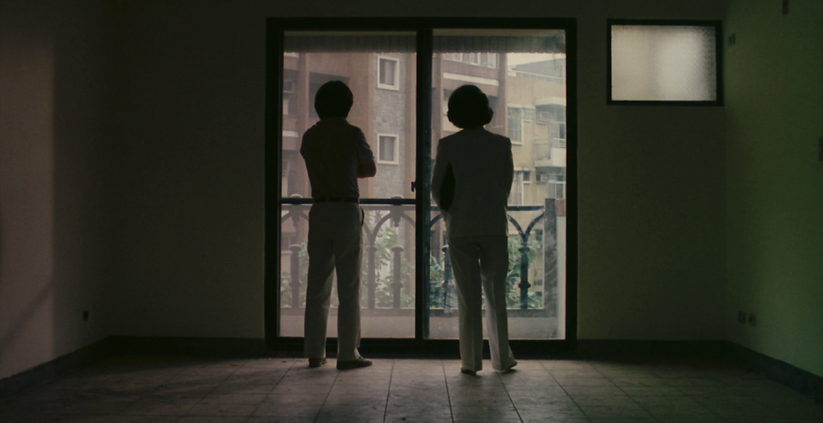THE BIRTH OF EDWARD YANG
AFTER HIS DEATH

Taipei Story
Several great films today have slipped through the hands of audiences even if we could watch them easily. One such great film that was missed by many was A Prayer Before Dawn (2017), directed by Jean-Stéphane Sauvaire, his second feature. This is totally unrelated to the topic but I urge everyone to watch it. Now, how would you feel if a film has slipped through your hands because they weren’t available in print?
I had heard about Edward Yang only a few months ago for the first time in my life. The acclamation he received from the film enthusiasts on social media was immense and expanding on all platforms. He is now being celebrated as one of the greatest filmmakers of all time. Why now? The answer is simple but definitely surprising—his films were not available and have never had a general audience until now. Ever since the Criterion Collection released a 4k restoration of A Brighter Summer Day in 2015, Yang has been a favorite among cinephiles today. This restoration was the first step towards revealing Yang’s films to the outside world. Within the span of last 3 years, two more films: Yi Yi (2000) and Taipei Story (1985) were restored and released in Blu-ray by Criterion Collection. Edward Yang has only made a total of seven features in his life, out of those seven films; five of them have been properly restored in HD now.

A Brighter Summer Day
Soon enough, I sat down and watched A Brighter Summer Day; a 4 hour long journey through the lives of young adults who lived in a rough environment after moving to Taiwan at the end of the Chinese civil war in 1949. When I was finished with the film I was reminded of an event in Bergman’s life that I had read about. Once when Bergman wandered through the screening booth of a theatre with a friend, he came across some film cases lying around on which he found Tarkovsky’s name written on it. Then he told his friend “Listen, I read something about this picture. We have to watch it and see what it’s all about.” He then bribed the projectionist to show him the film. It was Andrei Rublev. Bergman finishes the movie: “At about 2:30 a.m. we came out of the screening room with gaunt eyes, completely moved, enthusiastic and shaken. I will never forget it. What was remarkable was there were no Swedish subtitles. We didn’t understand a word of the dialogue, but we were nonetheless overwhelmed.” Today, all my experiences are never original. Somehow it seems that I am always putting myself in other people’s experiences instead of having my own—and I feel that is how it is with everyone else too.
There were of course subtitles in A Brighter Summer Day but beyond the dialogues there were more freedom and authenticity in the visuals. Yang followed the “Show, don’t tell” rule as best as Hitchcock did. He moved with the same freedom with the camera as Tarkovsky did. He illustrated the power of silence as Antonioni did. And yet, Yang was special. Throughout all his films there are traces of various influences by masters like Hitchcock, Tarkovsky, Ozu, Bergman, Antonioni, Herzog and Kurosawa but his efforts are too organic that it feels like Yang originated every one of those ideas as his own. That is perhaps what makes him one of the greatest filmmakers of all time.
If not for the Criterion Collection Yang’s films may have been hidden or gone forever. There is a short video (no longer than 3 minutes) of the process of restoration of A Brighter Summer Day in the Criterion Channel on YouTube: (https://www.youtube.com/watch?v=2AMSHs2adWk&t=18s). I insist on everyone out there to watch this and learn a little something behind the restoration of this film. The restoration of A Brighter Summer Day began on 2009 which was issued by the film foundation. The work behind the restoration is immense.

Taipei Story
I have now seen 4 of Yang’s features and I’m now longing for his other works to be restored as well. There is no doubt that Yang is an artist of the highest caliber. Yang’s Taipei Story (1985) which stars Taiwanese filmmaker Hou-Hsiao Hsien as the lead seems to be a personal favorite of mine as it exhibits the craftsmanship of Yang. In Yang’s films he treats places like characters—the city of Taipei in Taipei Story. This technique is used in films like Taxi Driver, Lost in Translation and Hiroshima, Mon Amour. What yang does is that he portrays the city of Taipei in the background of the films characters and there are exclusive wide shots of the city like a busy road, huge commercial billboards and tall buildings. Taipei Story begins with Lung (Hou Hsiao-Hsien) and Chin (Tsai-Chin) looking for apartments. Chin is finally moving out away from her parents now that she’s in great place financially. The story turns around as Chin and Lung’s relationship collapses slowly. Lung is more and more disconnected, he clings on to his past of his youth baseball championship. Nothing appeals to him anymore. All that’s around him are problems that are ripping him one by one. He helps people out financially when he himself needs the money. He doesn’t care about the present. Yang demonstrates how the modernization of the city begins to dominate the screen is crushing Lung’s world—not only in Taipei story but he portrays the consequences caused by the environment in his other films as well. The conflict of modernization is a common subject in all the 4 yang films that I have seen. It is perhaps his cornerstone like how Ozu also uses the same subject in many of his films. Each scene in his films is driven entirely by its own significance. There is nothing beyond what he shows. There is an inconsistent rhythm because of this, but it works well because of how the characters are developing and it captivates us. We are more involved with everything. We have an experience.




The use of the city in Taipei Story
There are many filmmakers who have received global recognition after their deaths but the world didn’t have the opportunity to see Yang’s work even after his death—until very recently. This dawns a new light on the importance and necessity of film restoration. I wonder how many more great filmmakers are yet to be discovered.
Yang is essential for everyone who’s into cinema. His films could change the course on your general ideas about filmmaking. There is probably no need of any order to watch the films of Yang but I’d suggest Yi Yi first. It is bit light on the viewer but the duration isn’t. Overall, the four films: Yi Yi, A Brighter Summer Day, Taipei Story and Terrorizers are a must watch. You’ll never be the same anymore. I promise.

Taipei Story
By Vishnu Sivakumar